Skin reconstruction techniques: Z-plasty as an aid to tension-free wound closure
A Z-shaped incision can be created in an area of high skin tension to allow skin relaxation and lengthening. A Z-plasty involves transposing the two interdigitating flaps of skin formed by the incision.
A Z-shaped incision can be created in an area of high skin tension to allow skin relaxation and lengthening. A Z-plasty involves transposing the two interdigitating flaps of skin formed by the incision.1-4 In veterinary surgery, this procedure is indicated to realign tissues, lengthen contracted scars, change the direction of a scar, aid relaxation to allow closure of a large wound, and increase the circumference of an orifice3.
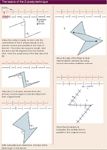
The basics of the Z-plasty technique
As a relaxing incision to aid in wound closure, the Z-plasty is especially useful for small to medium-sized skin wounds on the distal limbs and large wounds on the trunk that are under excessive tension after primary closure. Performing a Z-plasty avoids complications associated with second intention healing such as scarring, contracture, and poor hair growth. It is also simpler to perform than an axial pattern flap or mesh graft and avoids the mismatched texture, thickness, and hair type that can result from those techniques.3
Aside from relieving scar tension and relaxing contractures, Z-plasty can also be used to relieve constriction from circular scars and strictured orifices.1,2 Specifically, it has been used to correct stenotic nares in horses5 and anal stricture following perianal fistula cryosurgery in dogs.3

Figure 1. Wide excision (18 x 32 cm) of a hemangiopericytoma from the flank and hip of this bullmastiff resulted in extensive tension along the closure. Towel clamps were used to appose the skin while a suction drain and subcutaneous sutures were placed.
How it works
A Z-plasty is composed of a central limb and two arms of a Z-shaped incision.1,2,6 The incisions that create the central limb and arms of the Z should be of equal length since the flaps will be sutured together after transposition. The longer the central limb length, the larger the gain in skin relaxation. Using long lengths may be restricted by the amount of skin in the area; for instance, less skin is available on the distal limbs than on the trunk. In addition, the tension produced with flap transposition when creating a long central limb incision may be too great to allow closure.4

Figure 2. The central limb of the Z-plasty is incised parallel to the line of tension and perpendicular to the primary wound closure. Note that the central limb is 90 degrees to the wound, but because of the camera angle and the hip arch, the angle may appear less than 90 degrees in the photograph.
The angles of the Z can vary from 30 to 90 degrees, with larger angles creating longer final gain in length.2,5,6 Angles of 60 degrees are most commonly used since larger angles have a tendency to produce greater tension on the surrounding tissues.1,4,7 Angles less than 45 degrees produce narrow flaps with an insufficient blood supply.7
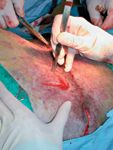
Figure 3. The first arm of the Z is made at a 60-degree angle from the central limb of the Z.
With the central limb and two arms of the Z of equal length and each angle at 60 degrees, theoretically, the length of the Z should increase 75%.4,6,7 Because of differences in skin elasticity and modification of the defect location, the actual increase in length is less than predicted.4,8,9 Therefore, a Z-plasty with 60-degree arms will actually produce a total increase in length of 41% to 63%.9
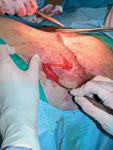
Figure 4. Both arms of the Z have about the same length as the central limb.
Special considerations
Z-plasty is a convenient method of closing high-tension wounds (see the boxed text titled "The basics of the Z-plasty technique"); however, its use is limited to specific cases. The area of surgery must have some laxity perpendicular to the line of tension to allow rotation of the Z flaps. Scarring or fibrosis that might limit the amount of skin elasticity in the region will make flap transposition difficult.2 When performing a Z-plasty, careful planning of the placement of the Z incision is needed. The region around the original defect must be manipulated to locate an area with an adequate amount of skin. Keep in mind that the principle of using a Z-plasty as a relaxing incision is moving skin from one site where it is readily available into another where it is needed to relieve tension.6 The health of the adjacent skin must be taken into account since the transposed flaps need to have an adequate blood supply.3 The base of a Z-plasty flap should not contain scar tissue, which could impair blood supply to the flap. Z-plasties can be performed before wound closure to relieve skin tension during apposition or after wound closure if excessive tension at the closure site is noted.
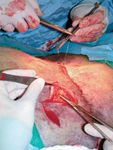
Figure 5. The flaps are elevated with subcutaneous dissection.
The technique and outcome
The most concise method of forming the Z is by using a precut, sterile template before incising. Radiographic film has proved to be an acceptable material because of its ease of cutting to form and its ability to conform to surfaces yet retain its shape. The radiographic film is gas-sterilized with ethylene oxide. Alternatively, the Z can be approximated by sight, marked with a sterile pen, and then incised. A full-thickness skin incision should be made to facilitate better flap rotation.9

Figure 6. Once the subcutaneous tissues have been dissected, the elevated flap tips begin to transpose as the Z incision is lengthened by tension from the original wound closure.
When using an adjacent Z-plasty to reduce tension on an existing traumatic wound or tumor excision site (Figure 1), place the central limb of the Z perpendicular to the long axis of the wound and thus parallel to the line of tension (Figure 2). Create the arms at a 60-degree angle from the central limb (Figure 3). The central limb and arms of the Z should be of equal length (Figure 4). When the flaps are transposed, the central limb will rotate 90 degrees to be parallel to the original wound, and the area of the central limb will be lengthened while its width will be decreased. This allows more skin flexibility to close the original wound.
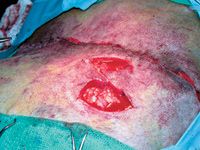
Figure 7. The flaps are further transposed.
After the Z has been incised, undermine the flaps of the Z and the skin between the Z and the original wound (Figure 5). This will allow the relaxation needed to appose the wound margins (Figure 6). Thorough hemostasis is important to avoid hematoma development, which can contribute to flap necrosis. A subcutaneous drain can be placed if seroma formation is expected.2 The original wound, if not already apposed, is closed by using a simple interrupted pattern, automatically bringing the Z flaps into transposition (Figure 7). Use half-buried horizontal mattress sutures at the flaps' tips to keep them in place.2,3,6 Interrupted subcutaneous sutures can be placed after the flaps have been secured with a few skin sutures to help alignment. One or two tacking sutures may also be needed between the wounds to help eliminate dead space.2,6 Complete the closure of the skin of the newly formed Z with a simple interrupted pattern.
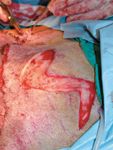
Figure 8. In this dog, a second Z-plasty is performed on the opposite side of the primary wound closure.
Proper planning of the Z incision will provide optimal results. If the Z-plasty limb lengths or angle sizes are too large, however, dehiscence is likely. The use of double opposing or multiple Z-plasties may need to be considered as an alternative to a large, single Z-plasty (Figures 8 & 9).3,4
As long as the Z-plasty is used prudently, the complications are few. The most common complication of Z-plasty is avascular necrosis of the flap tips.3 Placing half-buried horizontal mattress sutures at the tips can reduce the likelihood of this occurring. A modified Z-plasty can also be used, in which the arms of the Z are slightly curved.3 This modified technique will widen the flap tips and increase the blood supply.

Figure 9. The final appearanceof the wound closure and bilateral Z-plasties oneday after surgery.
Cary Bosworth, BS
Karen M. Tobias
Department of Small Animal Clinical Sciences
College of Veterinary Medicine
The University of Tennessee
Knoxville, TN 37996-4554
REFERENCES
1. Trout, N.J.: Principles of plastic and reconstructive surgery. Textbook of Small Animal Surgery, 3rd Ed. (D.H. Slatter, ed.). W.B. Saunders, Philadelphia, Pa., 2003; pp 274-292.
2. Swaim, S.F.: Z-, V-Y, and W-plasties. Surgery of Traumatized Skin: Management and Reconstruction in the Dog and Cat. W.B. Saunders, Philadelphia, Pa., 1980; pp 395-415.
3. Vig, M.M.: Management of experimental wounds of the extremities in dogs with Z-plasty. JAAHA 28:553-559; 1992.
4. Pavletic, M.M.: Tension-relieving techniques. Atlas of Small Animal Reconstructive Surgery, 2nd Ed. W.B. Saunders, Philadelphia, Pa., 1999; pp 131-171.
5. Bowman, K.F.; Swaim, S.F.: Double opposing Z-plasty for correction of stenotic naris in a horse. JAVMA 180(7):772-775; 1982.
6. Swaim, S.F.; Henderson, R.A.: Management of skin tension. Small Animal Wound Management, 2nd Ed. Williams & Wilkins, Philadelphia, Pa., 1997; pp 143-190.
7. Hudson, D.A.: Some thoughts on choosing a Z-plasty: The Z made simple. Plast. Reconstr. Surg. 106(3):665-671; 2000.
8. Furnas, D.W.; Fischer, G.W.: The Z-plasty: Biomechanics and mathematics. Br. J. Plast. Surg. 24(2):144-160; 1971.
9. Rohrich, R.J.; Zbar, R.I.: A simplified algorithm for the use of Z-plasty. Plast. Reconstr. Surg. 103(5):1513-1518; 1999.